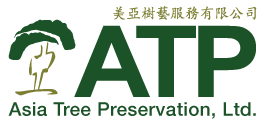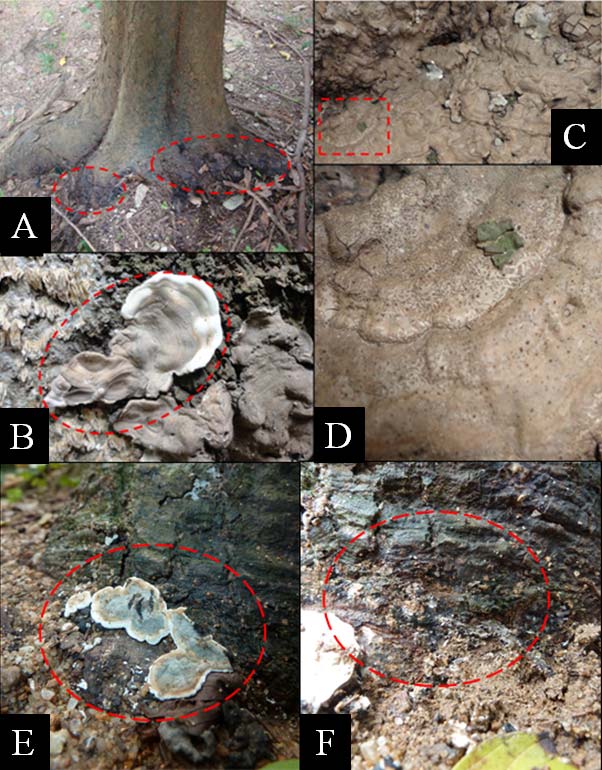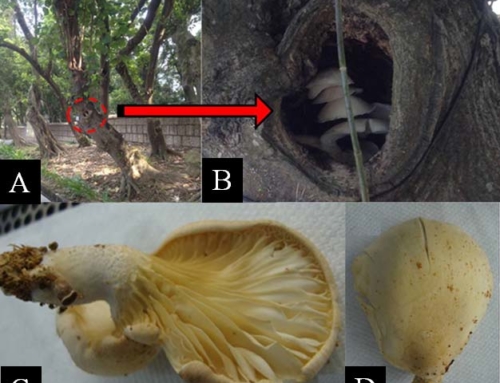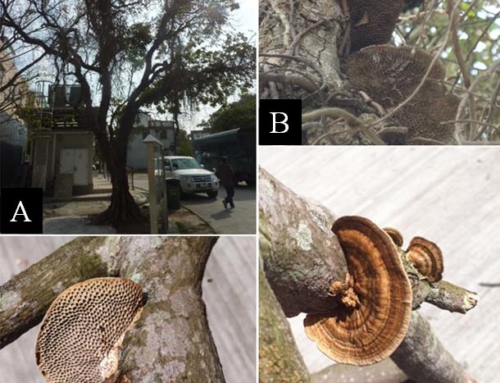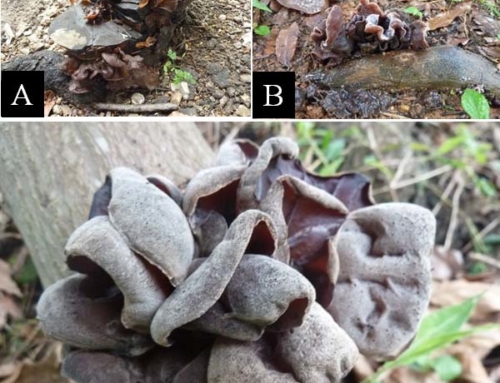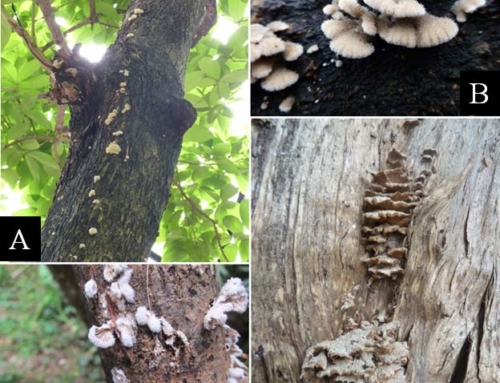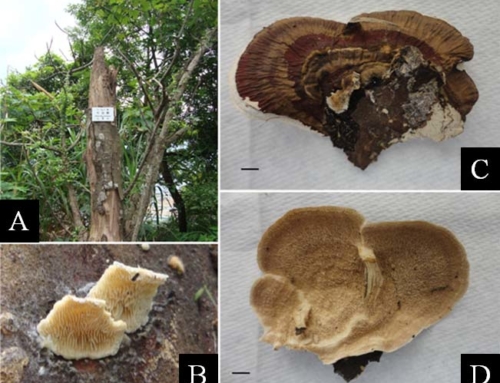Fruiting Body
Stromata 1.5-7 cm in diameter, 2-3 mm thick, separated, aggregated or fused, attached to substrate with narrow connectives, with crenate margins, surface brown-coppery to dark brown, with reticulate cracks, immediately beneath surface carbonaceous, tissue between and beneath perithecia brown to dark brown; perithecia 1.3-1.8 mm high, 0.6-1.5 mm wide, globose to obovoid; ostioles papillate to finely papillate; asci 7-9 μm × 3-4.5 μm, with apical ring bluing in Melzer’s iodine reagent, urn-shaped; ascospores 33-43 μm × 8-11 μm, unicellular, dark brown, fusiform to ellipsoid, inequilateral, smooth, germ slit straight, slightly less than or nearly equaling spore length.
Distribution and Range
Kretzschmaria species have a worldwide distribution with K. sandvicensis occurring in the tropics. Locally, K. sandvicensis is found on Celtis sinensis
Signs and Symptoms
K. sandvicensis is found associated with roots and tree collar region of infected trees. Obvious symptoms may not be easily discerned on infected tree as infection is a slow process. During the advanced stage of infection, non-specific symptoms such as crown defoliation and cankers on lower trunk may be observed on infected trees. Both the primordial grayish leathery white margins fruiting bodies and the mature carbonaceous lumpy fruiting bodies (i.e. stromata), though inconspicuous, could be found on the roots and root collar regions of infected trees and served as readily available signs to confirm the presence of this fungus. Extensive decay of woody tissue could be observed underneath the locations where fruiting bodies are found.
Pathology
Kretzschmaria spp. cause soft and white rot decay on trees. This fungus could grow readily on woody substrata as a saprotrophic fungus but could act readily as a pathogenic fungus causing damages to sapwood and heartwood of living trees.
Management and Control
Risk category: Moderate (ORANGE) Since this fungus would adversely affect tree health and structural stability, infected trees should be put under regular monitoring. As infection could be initiated through wounds, trees should be kept healthy and prevented from damages that would result in mechanical wounds of the lower trunk and the root systems. Fruiting bodies, if discernible and spotted should be removed to minimise the risk of building up of fungal inoculum and infecting adjacent trees. Fungicides may be used for trees exhibiting early or advanced stage of infection, though the treatment may not be effective to hamper the onset of the disease. At the advanced stage of infection in which the structural integrity of the trees is undermined and could not be mitigated through installation of props and wires, removal of structural limbs and/or whole tree should be considered.
Citation: Note on Common Wood Decay Fungi on Urban Trees of Hong Kong
